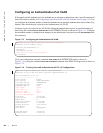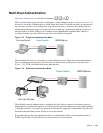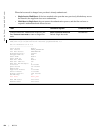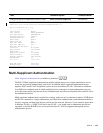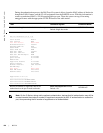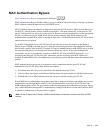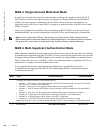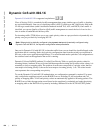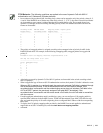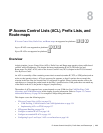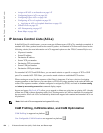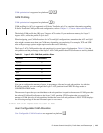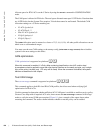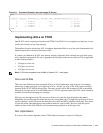
130 | 802.1X
www.dell.com | support.dell.com
Dynamic CoS with 802.1X
Dynamic CoS with 802.1X is supported on platforms: c s
Class of Service (CoS) is a method of traffic management that groups similar types of traffic so that they
are serviced differently. One way of classifying traffic is 802.1p, which uses the 3-bit Priority field in the
VLAN tag to mark frames (other classification methods include ToS, ACL, and DSCP). Once traffic is
classified, you can use Quality of Service (QoS) traffic management to control the level of service for a
class in terms of bandwidth and delivery time.
For incoming traffic, FTOS allows you to set a static priority value on a per-port basis or dynamically set a
priority on a per-port basis by leveraging 802.1X.
One use for Dynamic CoS with 802.1X is when the traffic from a server should be classified based on the
application that it is running. Static dot1p priority configuration done from the switch is not sufficient in
this case, as the server application might change. You would instead need to push the CoS configuration to
the switches based on the application the server is running.
Dynamic CoS uses RADIUS attribute 59, called User-Priority-Table, to specify the priority value for
incoming frames. Attribute 59 has an 8-octet field that maps the incoming dot1p values to new values; it is
essentially a dot1p re-mapping table. The position of each octet corresponds to a priority value: the first
octet maps to incoming priority 0, the second octet maps to incoming priority 1, etc. The value in each
octet represents the corresponding new priority.
To use the Dynamic CoS with 802.1X authentication, no configuration command is required. You must
only configure the supplicant records on the RADIUS server, including VLAN assignment and CoS
priority re-mapping table. VLAN and priority values are automatically applied to incoming packets. The
RADIUS server finds the appropriate record based on the supplicant’s credentials and sends the priority
re-mapping table to the Dell Force10 system by including Attribute 59 in the AUTH-ACCEPT packet.
Note: When priority is statically configured using dynamic dot1p and dynamically configured using
Dynamic CoS with 802.1X, the dynamic configuration takes precedence.



